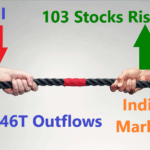Explore the Top 3 Crucial Investing Mistakes to Sidestep
For individuals venturing into the world of investing, steering clear of common pitfalls is essential for long-term success. Understanding the significant errors to avoid can make a substantial difference in one’s financial journey.
The Basic Rules for Investing in Stocks
Investing in stocks has the potential to help you grow your wealth over the long term. However, it’s essential to understand the market and have the necessary knowledge and experience to succeed. While quick profits are possible, relying on luck can be risky, and market downturns can lead to losses. Despite some negative perceptions of the stock market, the increasing participation of retail investors demonstrates growing trust in the market.
Importance of Avoiding Losses
Many new investors focus on making money without considering how to avoid losses. However, minimizing losses is crucial for long-term success. As Tanushree Banerjee emphasizes, “To finish first, you have to first finish.” Losing capital makes it harder to generate wealth because you need to recover those losses.
To guide you in mitigating risks and potential losses in the stock market, we have put together a brief 3-point checklist:
3-Point Checklist to Identify Red Flags in Stock Investing
When venturing into the stock market, recognizing potential red flags is crucial to making informed investment decisions. We’ve compiled a short 3-point checklist to help investors identify and avoid common pitfalls.
Point 1: Avoid Loss-Making Companies
Investors are often tempted by stocks of companies that have been consistently incurring losses. The hope is that if the company were to turn around and become profitable, the stock price would surge, resulting in substantial gains for early investors.
However, it’s essential to recognize that investing in such companies is more akin to speculation than investing. There’s no guarantee that a loss-making company will recover, and by investing in these speculative stocks, one is exposing their capital to significant risk.
For new investors, it’s prudent to steer clear of these “turnaround stocks” and focus on profitable companies to minimize risk.
Point 2: Beware of Companies with High Debt
Companies burdened with high levels of debt should raise a red flag for potential investors. High debt levels significantly elevate the risk associated with investing in these companies.
In the event of a slowdown in sales, the company’s net profits are doubly impacted, as interest payments remain fixed. To mitigate this risk, the company’s management must demonstrate the capability to not only service existing debt but also drive profit growth.
A key metric for identifying companies with high debt is the debt-to-equity ratio. As a rule of thumb, new investors should consider avoiding companies with a debt-to-equity ratio higher than 1, while conservative investors may set a more stringent threshold at 0.5.
It’s important to note that the definition of “high debt” can vary based on the company’s size and industry. Therefore, investors should also assess the company’s cash flow and capital expenditure requirements to gauge its ability to service its debt.
A more comprehensive approach involves considering the interest coverage ratio, which measures the company’s ability to meet its interest obligations. A higher interest coverage ratio indicates a lower risk associated with the company’s debt.
Point 3: Problems with the Management
When it comes to businesses, it ultimately boils down to the people at the helm. The decisions impacting a company’s success or failure are not driven by the machinery, but by individuals in charge.
Importance of Management
The management can be the linchpin of a company’s fortune, particularly for small businesses. While large companies may have systems in place to weather poor decisions, smaller ones are more vulnerable. Even a few missteps can significantly affect their trajectory.
Red Flags of Management
Investors should exercise caution when dealing with companies led by management with questionable integrity. It’s prudent to steer clear of such stocks, regardless of how enticing the narrative might be. Taking preemptive measures and avoiding risky investments tied to dubious management is key to safeguarding capital.
Safeguarding Capital for Investing Success
These three red flags represent crucial points for new investors to keep in mind. By recognizing and sidestepping these warning signs, investors are well on their way to realizing their investment objectives. Prioritizing the protection of capital is paramount before focusing on capital growth. Ultimately, the return of capital holds more significance than the return on capital.
Concluding Note
In the realm of investing, it’s imperative to remain vigilant and steer clear of potential pitfalls. By avoiding the identified red flags associated with management, investors can lay a strong foundation for their financial endeavors.
Remember, the insights provided here are for informational purposes only. They do not constitute stock recommendations and should not be misconstrued as such.











